October 2025 Tax Insights
October 28, 2025
Section 179 Expense
The One Big Beautiful Bill Act (OBBBA) marked a pivotal update to Section 179 expensing, significantly expanding its scope and impact for U.S. businesses. Effective July 4, 2025, the legislation doubled the maximum deduction limit to $2.5 million, with a phase-out threshold beginning at $4 million, both indexed for inflation starting in 2026. These changes allow companies to immediately expense a broader range of qualifying assets—including equipment, software, and certain building improvements—rather than depreciating them over time. Notably, OBBBA made these enhancements permanent, offering long-term certainty for capital planning and investment. When paired with the reinstated 100% bonus depreciation, which allows for full expensing of eligible property regardless of income, Section 179 now serves as a powerful tool for businesses seeking to optimize cash flow and reduce taxable income.
Excess Business Loss (EBL) limitation
The Excess Business Loss (EBL) limitation, codified under Section 461(l) of the Internal Revenue Code, restricts the amount of business losses that non-corporate taxpayers—such as sole proprietors, partners, and S corporation shareholders—can deduct against non-business income. For tax year 2026, the EBL limitation remains in effect and has been permanently extended under the One Big Beautiful Bill Act (OBBBA). The threshold for 2026 is $313,000 for single filers and $625,000 for joint filers, indexed annually for inflation. Any business losses exceeding these thresholds cannot be deducted in the current year and must be carried forward as a net operating loss (NOL). This rule is particularly important for high-income individuals with significant pass-through business losses, as it may limit their ability to offset income from other sources such as investments or wages. Businesses should plan accordingly to manage cash flow and tax liability, especially when anticipating large losses from operations, investments, or asset sales.
Investment Incentives
Qualified Small Business Stock (QSBS)
The Qualified Small Business Stock (QSBS) provision under Section 1202 of the Internal Revenue Code offers a powerful tax incentive for investors in eligible startups and small businesses. Under the One Big Beautiful Bill Act (OBBBA), the QSBS exclusion has been significantly expanded starting in 2025. Investors can now exclude up to $15 million in capital gains from federal income tax when selling QSBS, up from the previous $10 million limit. Additionally, the holding period requirements have been modified to allow partial exclusions: 50% after three years, 75% after four years, and 100% after five years. To qualify, the stock must be issued by a domestic C corporation with gross assets under $50 million at the time of issuance, and the company must be actively engaged in a qualified trade or business. These changes are designed to stimulate investment in innovation and entrepreneurship by making equity in small businesses more attractive to investors. Businesses planning to raise capital should ensure they meet QSBS eligibility criteria to maximize the tax benefits for their shareholders.
Opportunity Zones (QOZs)
Opportunity Zones (QOZs) continue to be a powerful tool for incentivizing long-term investment in economically distressed communities, and under the One Big Beautiful Bill Act (OBBBA), the program has been made permanent with several enhancements beginning in 2026. Investors who place capital gains into Qualified Opportunity Funds (QOFs) can benefit from rolling 10-year designations, allowing for more flexibility in planning and deployment. The updated rules also introduce new incentives for rural investments, including a 30% basis step-up after five years and full gain exclusion for investments held between 10 and 30 years. Additionally, the eligibility criteria for census tracts have been tightened to ensure that investments are truly targeted toward underserved areas. QOFs will face stricter reporting requirements, including annual disclosures on job creation, community impact, and asset use. These changes aim to improve transparency and accountability while preserving the tax benefits that make QOZs attractive to investors. Businesses and fund managers should review the new compliance obligations and consider how these reforms may affect their investment strategies and reporting processes.
Reporting & Compliance Changes
1099 Thresholds Increased
Important update to IRS reporting requirements that will take effect in 2026 and may impact your business’s payroll and accounting operations. The IRS has increased the reporting thresholds for several key forms, which means fewer reporting obligations for lower-dollar transactions—but also a need to update your internal systems to remain compliant.
Starting in 2026, the threshold for issuing Form 1099-NEC and Form 1099-MISC has been raised from $600 to $2,000. This means businesses will only need to issue these forms to independent contractors or service providers who earn $2,000 or more in a calendar year. Additionally, the threshold for Form 1099-K, which is typically issued by third-party payment processors such as PayPal, Venmo, and Square, has increased to $20,000 and 200 transactions. These changes are designed to reduce the administrative burden on small businesses and individuals with minimal income from side gigs or freelance work.
However, these updates require businesses to take action. Payroll and accounting systems must be reviewed and updated to reflect the new thresholds. Vendor tracking procedures should also be adjusted to ensure accurate reporting under the revised rules. Businesses that rely heavily on independent contractors or digital payment platforms may need to revisit their tax planning strategies to account for these changes.


